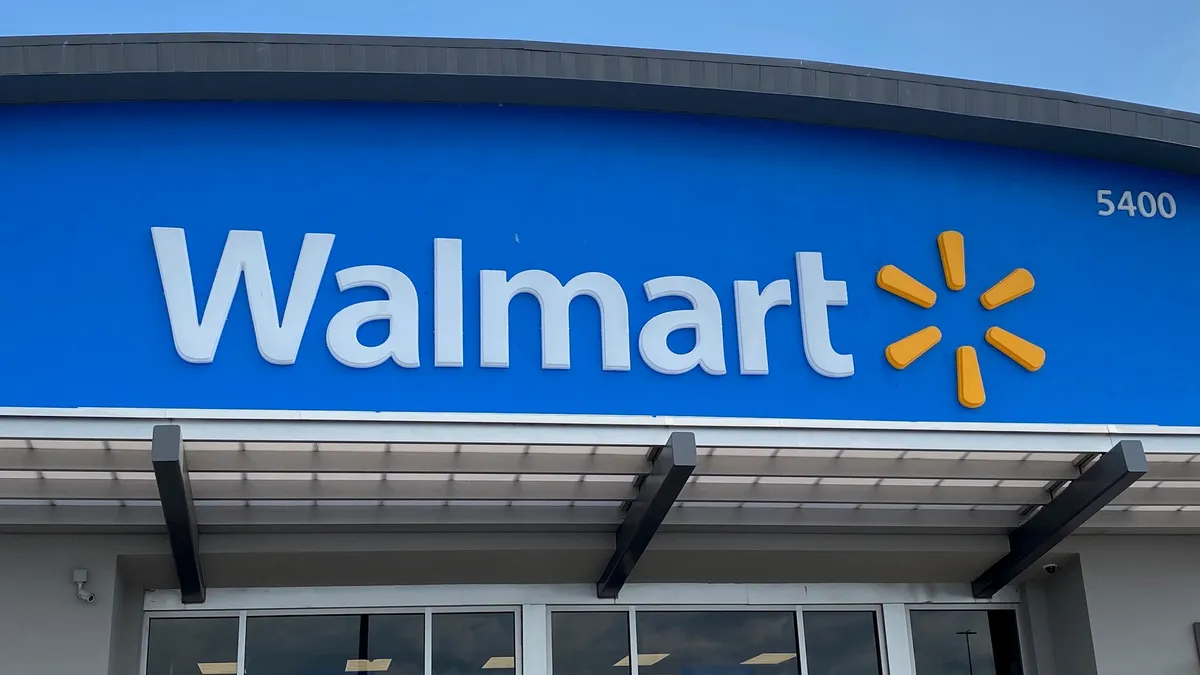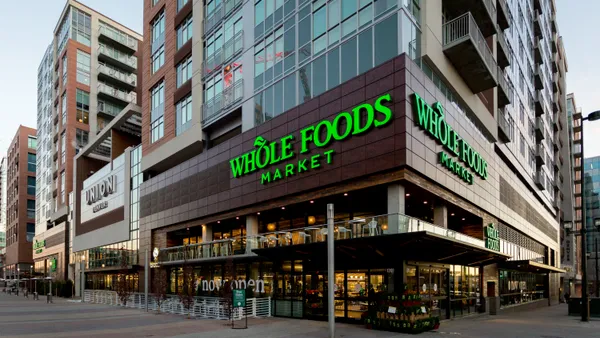Dive Brief:
- Walmart has cruised through its goal of cutting 1 billion metric tons of greenhouse gas emissions from its supply chain — an initiative known as Project Gigaton — six years ahead of schedule.
- Launched in 2017, the project had a target date of 2030. CEO Doug McMillon said on the company’s fourth-quarter earnings call this week that “we're excited to say that our suppliers have now reported projects exceeding that 1 billion metric ton mark six years early.”
- Walmart plans to continue Project Gigaton and is working to improve and expand it, EVP and Chief Sustainability Officer Kathleen McLaughlin said in a company post, though she did not specify a new goal.
Dive Insight:
With over 5,000 suppliers participating, Walmart has called Project Gigaton “one of the largest private sector consortia of its kind.”
When Walmart first set targets for reducing emissions both in its operations and value chain, the Science Based Target Initiative called it a “turning point.” The organization said then that the retailer’s leadership was “hugely significant and will help generate momentum to spur other retailers and consumer-facing companies to follow suit.”
At the time, Walmart was the 26th company with targets approved by SBTi — a consortium of nonprofits along with the United Nations Global Compact. Today, Walmart is one of nearly 3,000 companies that have committed to net zero targets through SBTi. Walmart has committed to net zero emissions in its own operations by 2040 and net zero overall by 2050.
Project Gigaton has been the centerpiece of the retailer’s efforts to reduce emissions in its supply chain. McLaughlin attributed the program’s success to date to, among other things, its benefits to and ease for suppliers, with Walmart providing support through resources, forums and programs to assist them.
SBTi also noted back in 2016 that Walmart is aided by the fact that some of its largest suppliers — many of them household consumer brands such as Dell, Diageo, General Mills, Kellogg and Sony — have emissions-reduction commitments of their own.
Still, Walmart’s massive buying power has a broad impact, including on large suppliers. Last year, for example, spice giant McCormick’s chief sustainability officer noted at a conference that large retailers like Walmart’s scope 3 targets can force brands to reduce their emissions. Broadly speaking, buyers’ goals to reduce their scope 3 footprints often have cascading effects throughout the supply chain.
Going forward, McLaughlin said Walmart is improving its estimates of its scope 3 footprint based on emerging standards and guidance. Additionally, the retailer is working through what parts of its value chain footprint “are addressable and which elements are largely outside our control, which reductions can be achieved through low cost interventions and which ones are expensive or not feasible through today’s technology.”
















